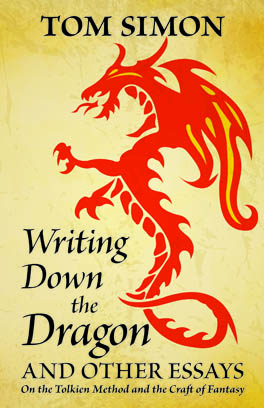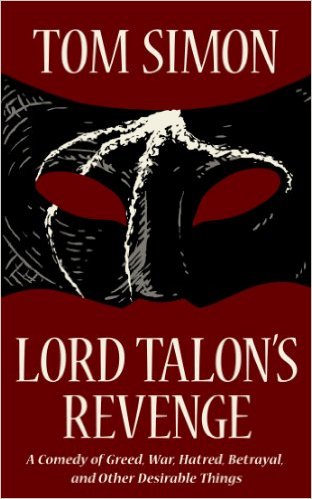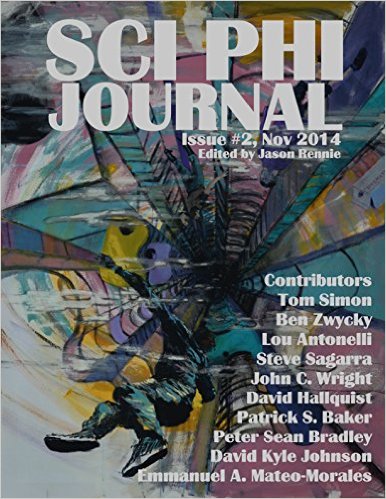Those of you who have joined us in the last year may not be aware that before the Superversive Literary Movement, there was still Superversiveness. It existed in the form of Mr. Superversive himself, the astute and witty essayist, Tom Simon.
When John and I conceived of the idea of the Superversive Literary Movement, we inquired of Mr. Simon as to whether he would be willing to allow us to use his LiveJournal handle for our new flegling lit movement. Not only did he kindly agree, but he graced this blog with our very first article, back in October of 2014.
Now, a year later, Mr. Simon strikes again with another excellent article. The first part of it, the scientific analogy, appears today. The second portion, the meat (or Tao) of the essay, will appear next week.
A collection of Mr. Simons excellent essays on Tolkien and our craft.
Life, Carbon, and the Tao
by
Tom Simon
A year has gone by since the Superversive blog officially kicked off, and during that time, as they say, life has happened. As writers, we always need to go back to that. Part of the deep malaise that afflicts our art form (and many others) is that it is too easy to be influenced. It becomes fatally easy to reuse tropes and characters and ideas from other stories, or other art forms; it takes an effort of will to go back to reality and look at it with fresh eyes. There is, I suspect, no such thing as strict realism in fiction – reality is too complex, too big, too un-story-like – but every story needs to be rooted in reality at some point. Not reality as we would like it to be – that is part of the flight of fancy on which the story takes us – but just as it is.
Today, as I look at reality, I find myself thinking of two questions, which, if answered badly, can lead our field up a blind alley. The first one arose in Golden Age science fiction, and led a lot of writers astray on a technical point. The second one arises in every form of fiction, and leads whole cultures astray. But there is a curious resemblance between them, and the answer to the first question, I find, sheds light on the second.
Mr. Simon also produces high quality fiction.
The first question:
What's so special about carbon?
There used to be a recurring trope in science fiction about ‘carbon-based life forms’, as distinguished from all the other kinds of life forms based on other elements. Silicon was the most popular, for good and plausible reasons; plausible, but alas, not sufficient.
Life requires complexity. The simplest microbe is a pullulating chemical factory in which thousands of types of complex molecules interact and collaborate to produce the delicate balance of stability and change that we refer to as ‘being alive’. There are good reasons, grounded in information theory, to suppose that life cannot be supported by a system much simpler than that.
There are three ways of joining atoms together, and two of them are not helpful for our purpose. Ionic bonds only form simple molecules. Metallic bonds don’t really form molecules at all, but masses of solid metal, with the same simple pattern repeated over and over. Covalent bonds are where the action is. Some elements don’t form covalent bonds at all, and we can scratch them off our list. Others form anywhere from one to four bonds per atom, and clearly, the more bonds an atom has, the more complex structures it can participate in. We could build molecules as complex as we liked out of atoms with a valency of 3; but the real winners are the carbon group elements, the only ones with a valency of 4. If we form a chain or ring of carbon-group atoms, we have plenty of free bonds left over, on which we can hang any number of other atoms; and this gives us the complexity that we require.
There are six elements in the carbon group: carbon, silicon, germanium, tin, lead, and flerovium. Tin and lead behave as metals, and germanium as a semi-metal: that is, they normally combine by metallic bonds. An atom of lead, tin, or germanium may form covalent bonds with other elements, but not, as a general thing, with other atoms of the same element; so we can cross those three off the list. Flerovium is an artificial element, never found in nature, with a half-life of a few seconds, and only a few dozen atoms of it have ever been observed. Scratch flerovium.
That leaves carbon and silicon; and to SF writers of the Golden Age and thereabouts, silicon looked like a good candidate for the formation of life. It is abundant, it readily forms covalent bonds, it has a valency of 4. In theory, every kind of carbon-based atom has a silicon-based analogue, and we could readily imagine a whole biology built up with silico-proteins and silico-nucleic acids. But in practice, those analogues never form. Silicon bonds with silicon easily enough, but much more readily with either hydrogen or oxygen. In nature, we never see one silicon atom bonded to another. Even the silicone compounds have oxygen atoms alternating with the silicon: Si–O–Si–O, never Si–Si. The Earth’s crust contains an enormous amount of silicon, but all of it is combined with oxygen, usually in the form of silica.
Carbon, too, combines more readily with oxygen or hydrogen than it does with carbon, but the difference of bonding energies is much smaller. So a plant, for instance, can invest the energy it receives from the sun to break apart carbon-oxygen bonds in CO2, and get most of that energy back by linking the carbon atoms together to form the backbone of carbohydrates or proteins. It would take much more energy to break up SiO2 and link the silicon atoms together, and even then, the silicon chains would be very unstable, and would go poof in the presence of either oxygen or hydrogen. Since hydrogen is the most common element in the universe, and oxygen is the most common element in rocky bodies like the Earth, it’s safe to say that silicon-based life is a non-starter. One still hears of it occasionally in ‘soft’ science fiction, but it has no place in hard SF, any more than the canals of Mars, the oceans of Venus, or for that matter, H. G. Wells’ gravity-proof mineral, Cavorite.
We speak of organic chemistry and inorganic chemistry, as if it were an equal division; but this is not so. We call a compound organic if it contains carbon, and inorganic if it does not. Even though carbon is only one element out of a hundred-odd, inorganic compounds are vastly outnumbered by organic ones, and all new discoveries in chemistry can only increase the odds still further. If you look at the molecules that are complex enough to serve as the building blocks of life, whether Earth life uses them or not, they all contain carbon – every single one. One day, we may discover a kind of life that does not depend on chemical bonds at all; a life form, perhaps, that relies entirely on the direct interactions of high-energy fields in a plasma medium, to which it would not matter what kind of atoms the plasma itself is made of. We cannot say that such a thing is impossible; but we can say that silicon-based life is impossible. On Earth, or in any kind of planetary or deep-space environment, carbon is where the life is.
Next week: Question Two: What is the Tao?
Tom's essays also appear in Sci Phi Journal
(This one with a story by John as well.)
For other writings by Tom Simon, visit his blog.







